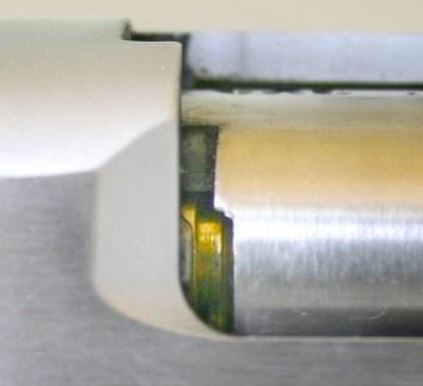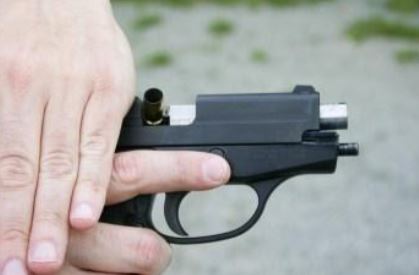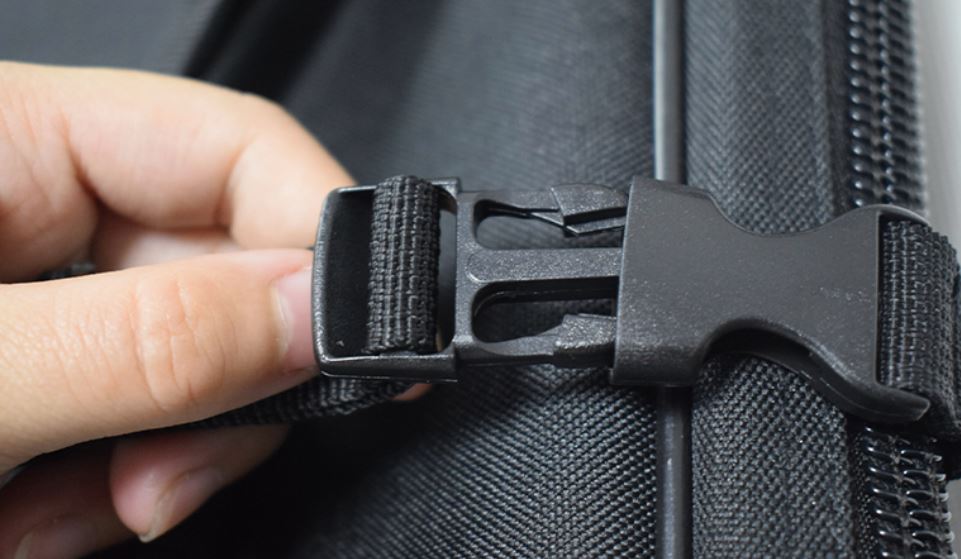Fishing, Hunting and Camping
Tips, articles and reviews by people like you.
How to Clean Gun Jams and Fix Malfunctions
It is well-known, if some part of the gun moves, it can also jam. Unfortunately, semi-automatics guns are not guaranteed from jams and dysfunctions. If we are talking about gun issues, the action that caused the jam is essential. Understanding that action can assist in making a right and immediate decision on taking the right steps to fix. Taking care of all of our shooting gear is an important part of being safe.
Before we begin, please note that you should always handle a firearm safely. Even when jammed, always have it pointed down range or in a safe direction. If there is a live round in your firearm, it is still live and can fire at any moment.
 Murphy’s law always works; that is why always expect and be prepared that an unexpected issue can arise at the least expected and the worst moment. If we are talking about a dysfunction during a shooting, maybe the best way to fix the problem is to have a backup gun and switch to it. Unfortunately, in the majority of cases, this is not a practical or convenient variant. Anyway, for you as a gun owner, it can be very crucial to master all the reasons that cause specific dysfunction or jams. Practicing issue identification and correcting it as needed can be a game-changer in difficult situations. So, if any dysfunction happens, your knowledge will help you make right decisions
Murphy’s law always works; that is why always expect and be prepared that an unexpected issue can arise at the least expected and the worst moment. If we are talking about a dysfunction during a shooting, maybe the best way to fix the problem is to have a backup gun and switch to it. Unfortunately, in the majority of cases, this is not a practical or convenient variant. Anyway, for you as a gun owner, it can be very crucial to master all the reasons that cause specific dysfunction or jams. Practicing issue identification and correcting it as needed can be a game-changer in difficult situations. So, if any dysfunction happens, your knowledge will help you make right decisions
about what actions to take next. It might sound a bit strange, but a good training scenario includes making your gun fail to practice issue identification and correction. The most important thing you should do when you face any problem with the gun is to entirely hide behind the cover. In case if you don’t cover yourself, you become an easy target and are fully exposed. An important thing to remember: even if the gun is jammed, it is still loaded; you need to be careful with it. In such cases, always keep the muzzle pointed in the safest direction. Only after that follow gun safety mandates. Make sure you are using a gun that functions appropriately. In case you find some serious issues, sending the firearm back to the manufacturer or seeing a gunsmith is also a good idea. Below you will find the primary dysfunctions that you might face:
- Failure to shoot
- Failure to eject
- Double feed
- Failure to go into battery
- Squibs
Failure to shoot
 In case if you hear a click instead of bang during a shot, most probably a so-called failure to shot. A click is considered to be the loudest sound that you will hear during a gunfight. The reason for failure to shut can be the wrongly placed magazine. Make sure the magazine is seated correctly after the loading. If the slide is already pulled back to load the gun, “tap and rack” is the basic way out. In other words, hardly tap the magazine, rack the slide. This action will feed a new round, but in case if the chamber already has a round in it, the “tap and rack” trick will eject the rounds from the chamber. After that, a new round will be stripped from the magazine. It is one of the best techniques to perform every time there is a dysfunction like this.
In case if you hear a click instead of bang during a shot, most probably a so-called failure to shot. A click is considered to be the loudest sound that you will hear during a gunfight. The reason for failure to shut can be the wrongly placed magazine. Make sure the magazine is seated correctly after the loading. If the slide is already pulled back to load the gun, “tap and rack” is the basic way out. In other words, hardly tap the magazine, rack the slide. This action will feed a new round, but in case if the chamber already has a round in it, the “tap and rack” trick will eject the rounds from the chamber. After that, a new round will be stripped from the magazine. It is one of the best techniques to perform every time there is a dysfunction like this.

A weak magazine spring can also lead to a failure to shot. In case if your gun has a continuous feeding problem, most probably it is connected to the magazine itself or magazine spring. Compare your gun’s magazine opening with another to check if the lips are compressed or maybe damaged somehow. Looking for possible dents is also a good idea. Anyway, it is possible that the feeding issue continues even with different magazines.
In this case, it can mean that the magazine is not inserted into the gun well enough. Another problem can appear if you use high-capacity magazines and fill them to the limit. In such cases, the cartridge is affected by excessive pressure, which, as a result, makes it more difficult to seat the magazine properly. If you realize this is the reason for the issue, simply don’t use the full capacity and load a single less round.
TIP: Mark your magazines with different numbers or other symbols underneath the base pad. This will assist in quickly identifying them and saving a lot of time. In case if the magazine doesn’t works properly, the dysfunction can be connected with the firing system. The broken firing pin or week or broken hammer spring can be the reason for this damage. Another way to check these problems is to compare the primer hit depth to another spent case. Look for a dimple; if you don't find it, most likely, the firing pin is broken. In case you find a shallow dimple, this means either a weak or broken spring, or check if the firing pin is broken. If none of the described issues were found in your case, then there can be an ammunition problem. In this case, changing ammunition is a good idea. Besides, try using the round you had problems with when using another gun. Check if the same misfire issue appears.

You can try practicing cleaning drills by mixing your bullets with dummy rounds. One of the best ways to practice this is to ask your friend to load your magazines for you and ask him to add a few dummy rounds. By doing this, you won't know which magazine contains the dummy rounds and when to expect those bullets in the magazine. Another piece of advice is to consider the failure during the training as you would in real life. Remember to always fully hide behind the cover, identify issues, fix it, reload, and shoot again.
Failure to Eject
Problems with ejection can be caused by many factors. The casing can’t extract properly from the chamber in case if the extractor is weak or broken. The so-called stove pipe happens when the casing ejects partially and, as a result, gets caught by the slide. A simple solution to this will be firmly brushing the hand along the slide top. This will help to dislodge the casing or run the tap. After it will rack drill, turning the gun sideways, it will lead to ejection. It is quite possible that the casing, sometimes stove pipe, is so, a lousy ejector can be the reason for this. It is also possible that the main recoil spring is too heavy. As a result, it interferes with slide motion. If the recoil spring works properly and corresponds to the manufacturer's specifications, seeing a gunsmith is a good idea. Both the ejector and the extractor will be checked profoundly. Also, note that a weak charge can be the culprit as well, in case of reloads’ usage.
Double Feed

Such issues like double feeding can happen if the previous round is not ejected. The slide gets a new round from the magazine. As the previous one is still in the chamber, jamming against it happens. In case you face this issue during the gunfight, consider switching to your backup gun. The reason for this is the fact that fixing this issue is much time consuming, and because of this fact, the double-feed is considered as the most significant jams among others. It is required to eject the magazine, empty the chamber and again reload if you want to fix the double-feed issue. After that, the magazine properly lodges the gun, held in by the round it is trying to get. You need to lock back the slide first to release it. Right after that, you should eject the magazine from the gun by pressing the release button. It is quite possible that the magazine is still held tight; if so, some pressure needs to be applied. Racking the slide multiple times if it is required to eject the original round. As soon as the round is ejected, a new magazine can be inserted in the gun to avoid any problems, as the old one may have been damaged. After that, the weapon is ready to fire.
Failure To Go Into Battery
Failure to go into the battery is the process when the round is not correctly placed in the chamber. A dirty gun or bulging round can be the reason to cause this type of issue. In general, the dirty gun slows the slide motion down and reduces the ability to properly push the round into the chamber.

Also, note that bulging rounds are usually found reloaded in case if the resizing die was not completely cycled downward. In these circumstances, you need to hit the slide back. It is possible that the slide doesn’t engage fully. If so, lock open the slide, eject the magazine, use a long and thin object like a pencil to run down the barrel, and dislodge it.
Squibs
Squib is a usual dysfunction connected to noncommercial reloads. Basically, a squib is a round that lodges in the barrel. This can happen if the cartridge doesn’t have any or enough gunpowder. The first alert of this issue is when you hear a pop sound instead of a bang. If you hear the pop sound, you need to stop the shooting very quickly. This could be dangerous, as that sound indicates primer exposure in the empty case. Don’t continue shooting the bullet that blocks the barrel; most probably this will lead to gun exposure. You need to remove the magazine, lock back the slide if you want to fix the squib.
Clearing Revolvers
Compared to semi-autos, revolvers have fewer moving parts, no feeding issues. Instead, jams either are easy to be cleaned or are challenging to clean. There is no in- between. Most of the repeated revolver jams are squibs and high primers. A high primer is a process when the primer slightly protrudes out of the round bottom and doesn’t sit in the casing properly. As a result, this protrusion rubs against the gun frame. This stiffens the cylinder rotation or even jams it completely. If you swing out the cylinder by holding the cylinder-locking mechanism open, it will fix the jam issue. Severe pressure might be required.

Whenever you try to fix a jam issue, remember to keep the gun pointed in a safer place, as a live round is still inside the gun. To fix a squib in a revolver case, use the pencil as described in the semi-auto case. These dysfunction types are the general ones that happen no matter the brand or firearm. That is why practicing problem identification and jam cleaning techniques are vital. Also, remember that in some cases, not all jam issues can be fixed easily; if so, it is much safer to see a gunsmith. Seeing a gunsmith is essential, especially if a live round is causing the problem. Don’t forget to safely lock the chamber open gun before taking it to the gunsmith.
Deal Alert! Tested: Cheap Tactical AR Firearm Carry Case Bag For Your Gun
So I have been on the hunt for a new AR bag for my son. Santa brought him a new AR 15-22 for Christmas and he needed something to take it to the range in. I started looking around and honestly found AR bags to be crazy in price! So I dug in a little deeper and found a great deal. Actually a couple great deals, but below is what we ended up going with as they had the best reviews and price.
The one down side to this is that it will ship from China, which kinda sucks, but worth it in the long run, being that you can get darn good quality Tactical AR gun bag for $30 shipped. Let’s face it, most of those Facebook ads you see are selling you the same exact thing at double/triple the price, I just skipped the middle man! So if you don’t mind that, I suggest checking it out.
If you don’t want to take my word for it, or just want to look for yourself and see other user reviews, just go here to see them.

The Tactical AR Firearm Bag Choices
So, the first thing to go over is the selection. The above tan pictured tactical gun bag is the one I went with, but there are a few colors/patterns to choose from. They include: Black, tan, army green and cammo.
There are also three different sizes to choose from to fit different size guns. They are measured in metric, but I have taken the liberty to break that down for you :).
Sizes
- 81cm x 24cm = 31.75 in long x 9.5 in wide
- 94cm x 26cm = 37 in long x 10.25 wide
- 115cm x 28cm = 45.25 in long x 11 in wide
About the Tactical AR Gun Bag
This is a soft sided nylon gun bag. Being nylon, it should last years. There are many pockets and plenty of room for storage that we will cover here.
First, if you go to the page and look at the photos, you will notice that you’re actually getting two bags in one. The main compartment is for your AR, or larger other gun, but there is also a smaller part of the bag to strap a couple pistols in for travel as well.
Next is the zipper and buckle quality. As you can see in the below photo, the zippers are well made and the buckles are your basic plastic buckles that you would find on any AR soft case. They are stiff and hold tight.

The AR 15 Gun Bag has Plenty of Storage, and backpack straps/sling
If you are one of those people that has a lot of gear, this bag has plenty of storage for you. Not including the two compartments for guns, it also has 4 large pocks that can hold ammo, magazines, ear/eye protection, gun/scope tools, extra parts and even some bugout equipment.
On the inside of the main AR compartment, you will find two strap points to hold your gun tightly in place.
In the smaller gun compartment, you will also find two straps to hold down magazines, pistols, smaller gun or whatever else you use it for.
This soft sided AR travel bag also incudes backpack straps to make travel/hiking easy. It does have the regular handle as well like any other gun bag, but the backpack straps are a nice addon if you are heading to an outdoor range and have some walking to do.
The Bottom Line on this Cheap AR 15 Tactical Gun Bag
Look, I say it is cheap because of the price (it doesn’t look/feel cheap). If you are looking to save a lot of money and want pretty darn good quality, I suggest at least checking it out. I mean $30 shipped? Heck yea I do! It has worked good for for us and it doesn’t look/feel cheap. Below are some pictures of others with this bag to get a feel on actual use/look.
Check Out Other Reviews or Buy Here









